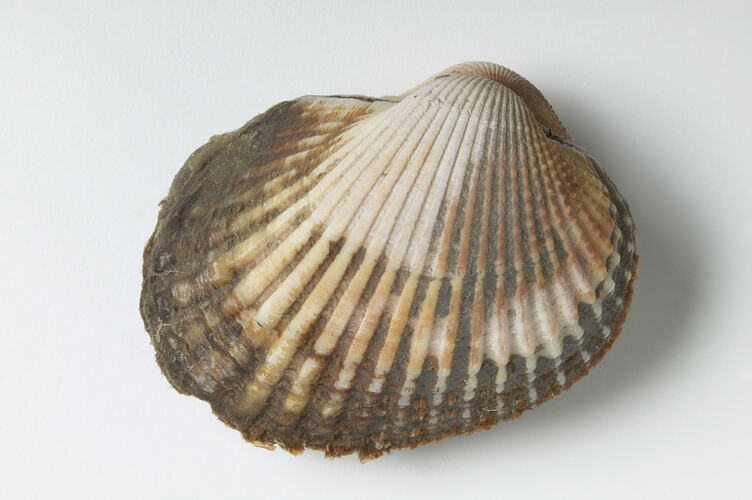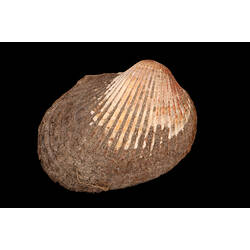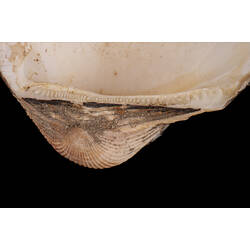General Description
The white shells are heavy, obliquely ovate, with a thick external coating (periostracum), particularly at the posterior. Exterior sculpture of broad, strong, radial ribs. The adults are usually without a thread-like byssus. Shell up to 8 cm across.
Biology
Mud Arks burrow in the mud. This species belongs to a group of bivalves that mainly occur in tropical waters of northern Australia. They are sometimes taken by humans for eating, but they do not contain much meat. Empty shells are often found in Aboriginal middens.
Distribution
Southern Australia, except Tasmania.
Habitat
Sheltered intertidal areas and shallow mud flats, sand and seagrass.
More Information
-
Animal Type
-
Animal SubType
-
Brief Id
White, ridges radiate from the hinge.
-
Colours
White, Brown
-
Habitats
-
Diet
Plankton or Particles
-
Endemicity
-
Commercial
No
-
Conservation Statuses
CITES: Not listed, FFG Threatened List: Not listed, DSE Advisory List: Not listed, IUCN Red List: Not listed
-
Depths
Shore (0-1 m), Shallow (1-30 m)
-
Water Column Locations
On or near seafloor
-
Taxon Name
-
Scientific Author
(Deshayes, 1840)
-
Common Name
Mud Ark
-
Other Names
Sydney Cockle , Trapezoid Mud Ark
-
Phylum
-
Subphylum
-
Class
-
Subclass
-
Order
-
Superfamily
-
Family
-
Genus
-
Subgenus
-
Species Name
trapezia





